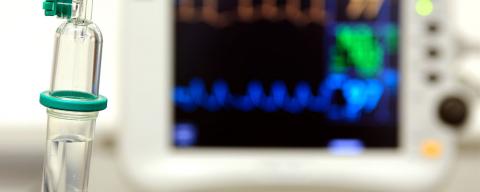
Orphan drugs, which refer to drugs developed to treat rare diseases, are emerging as a new battlefield for global pharmaceutical companies. They have been neglected by the industry because the number of rare disease patients is small and it is hard to carry out clinical trials. However, orphan drugs are expected to become a new niche market as more and more orphan drugs developed by domestic companies are registered with the U.S Food and Drug Administration (FDA).
According to industry sources on May 24, the development of orphan drugs, which have been strategically shunned by pharmaceutical firms, has been accelerating. This is because the causes of numerous rare diseases have been identified lately. In many countries, governments have expanded health insurance coverage to orphan drugs, stimulating a steep growth of the market for them. In addition, drug companies have turned their eyes to orphan drugs as only 350, or 5 percent, out of 7,000 rare diseases have treatments.
Early this month, Japan-based global pharmaceutical firm Takeda Pharmaceutical Co. surprised the global pharmaceutical industry by signing an agreement to take over Irish rare disease drugmaker Shire for 46 billion pounds (US$61.68 billion or 66.3 trillion won). The Takeda-Shire deal is the second largest ever merger and acquisition (M&A) deal in the global pharmaceutical industry. Founded in 1986, Shire has been focusing on development of orphan drugs for over 30 years. When other drug companies concentrate on developing the treatments for cancer, diabetes and hypertension, Shire has invested heavily in research and development of orphan drugs, mainly for genetic disorders, and secured the highest level of competitiveness in the global market.
Domestic companies are scrambling to develop more orphan drugs. Green Cross' treatment for Hunter syndrome, “Hunterase,” rang up 23 billion won (US$21.32 million) in sales last year. It surpassed the 20 billion won (US$18.54 million) mark of sales for two years in a row after posting 22.8 billion won (US$21.13 million) in 2016. Hunterase, the world's second commercialized treatment of Hunter syndrome, was released in South Korea in 2012 and designated as an orphan drug by the FDA a year later, and is undergoing phase II clinical trials in the U.S. Recently, it has pushed into the markets of the Middle East, Africa and South America. There are only about 70 patients suffering from Hunter syndrome in South Korea. However, Hunterase has continued to show steady sales as the price of the drug is nearly 2 million won (US$1,854) a bottle.
Afstyla, a treatment for haemophilia A developed by SK Chemicals Co. and licensed to Australia's biotechnology firm CSL Ltd. in 2009, is also showing an upward trend. SK Chemicals has significantly improved existing haemophilia treatments by adopting a single-chain molecular structure for Afstyla for the first time in the world. The drug has already entered the U.S. and European markets and was allowed to be sold in Australia last year.
IsuAbxis Co. is turning itself into an orphan drug maker. The company commercialized Abcertin, a treatment for Gaucher disease, in 2013 and launched Fabagal, a treatment for Fabry disease, in 2014. The number of patients suffering from Gaucher disease and Fabry disease are 40 and 100, respectively. Gathering momentum from commercialization, IsuAbxis is pushing to develop haemophilia and hematoglobinuria treatments.
This year, the FDA granted orphan drug status to a hemangiosarcoma treatment of Hanmi Pharmaceutical Co., a tuberculosis treatment of LegoChem Biosciences Inc., a growth hormone deficiency treatment of Genexine Inc. and a Duchenne dystrophy treatment of Bioleaders Corp. These treatments are now undergoing clinical trials. When a pharmaceutical company commercializes a drug that was designated as an orphan drug by the FDA, it is offered tax benefits on its development costs as well as obtains the exclusive sales rights for seven years.
